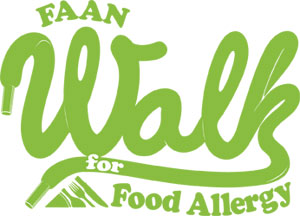In two months, my family is walking to raise funds for food allergy research, education, awareness and advocacy. Here’s why.
 For millions of people like me who have food allergies, the simple act of grocery shopping or eating out can be a minefield. Food allergies range from mild to immediately life-threatening, and while some treatments show promise at suppressing them, and emergency medication (if given right away) is usually effective, the only reliable course right now is avoidance.
For millions of people like me who have food allergies, the simple act of grocery shopping or eating out can be a minefield. Food allergies range from mild to immediately life-threatening, and while some treatments show promise at suppressing them, and emergency medication (if given right away) is usually effective, the only reliable course right now is avoidance.
That’s not as easy as you might think in a world where packaged foods seem to have 500 ingredients, and a lot of people (including restaurant cooks!) are unaware of or outright dismiss critical medical needs as simple preferences.
When I ask you whether your homemade cookies have nuts in them, or when I ask the waiter whether the salad dressing is based on peanut sauce, it’s not because I want attention. It’s because I don’t want to spend the afternoon in the hospital. Or worse.
To top it off, the medical community is still trying to nail down just what causes allergies. We know the mechanism: The body’s immune system detects a foreign substance, identifies it as dangerous, and overreacts to it, causing anything from tingling, swelling and hives to difficulty breathing and death. What we don’t know is why some people have this sort of reaction and others don’t. Again, there’s promising research being done, but we’re a long way from being able to say “Do X and not Y and you can prevent your child from developing life-threatening allergies.”
All these are reasons that my family is walking to raise funds for the Food Allergy Network. Their mission is to spread awareness, provide education and advocacy, and promote research into food allergies. You may have seen them in the news recently as they’ve pushed for state and federal laws encouraging schools to carry stocks of epinephrine auto-injectors — and allowing them to use them — so that children who experience a serious reaction at school can be kept alive.
The Los Angeles walk is coming up on October 21 in Long Beach, 60 days from now.
Please donate or join our team!
Thank you!

